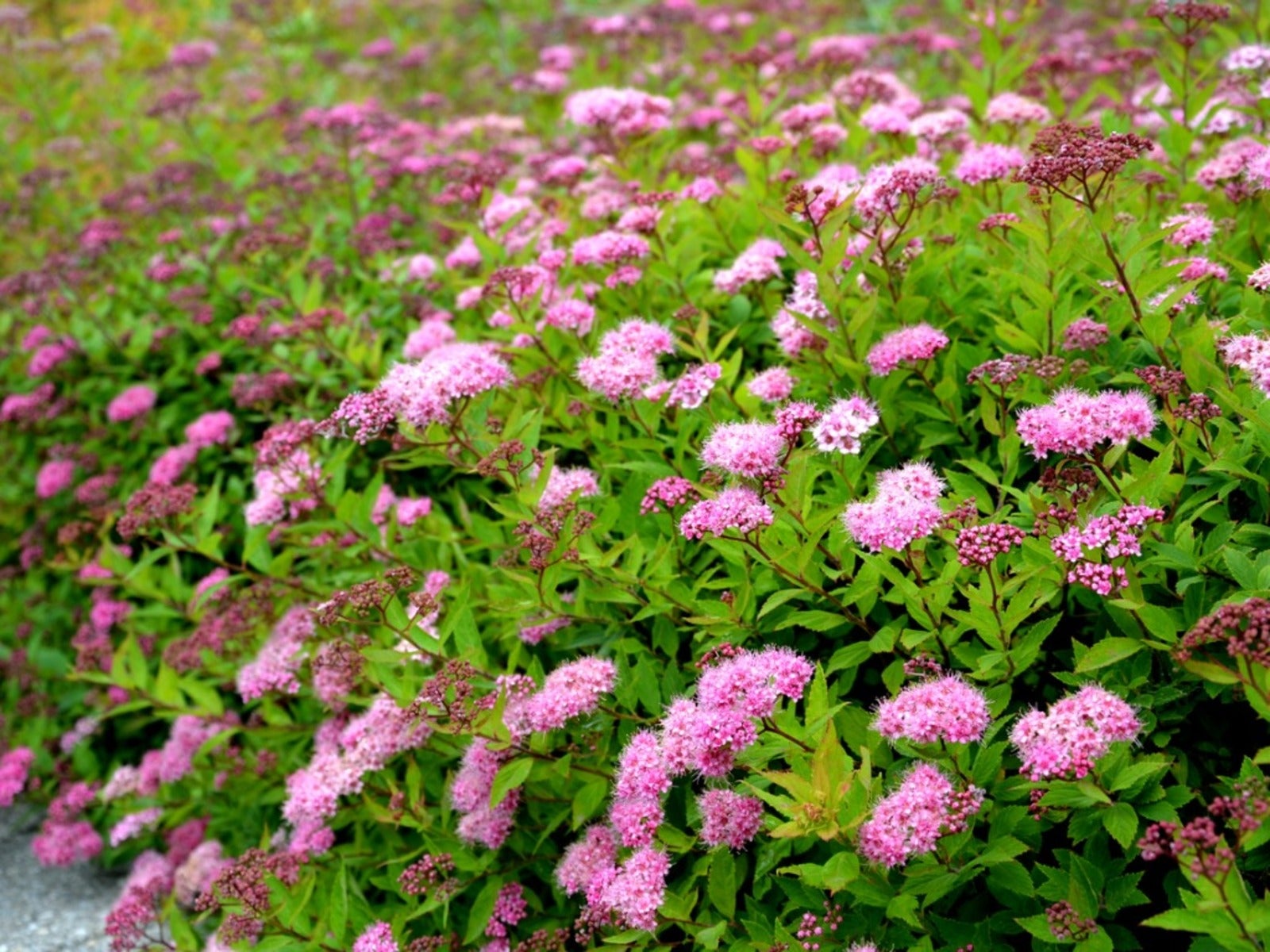10 Native Spirea Japonica Bush Alternatives


We live and learn as gardeners. It is unlikely that those who fell in love with Japanese spirea (Spiraea japonica) when it was imported to the United States a century ago had any idea that the gorgeous ornamental, with its showy pink flowers, would be a threat to native ecosystems today. Yet it clearly is, and responsible homeowners should find an alternative to Spirea.
If you are wondering what to plant instead of spirea, it’s good to know that there are more than a few excellent native alternatives.
The Japanese Spirea Problem
Japanese spiraea tolerates a vast range of soil conditions. It can thrive in full sun or partial shade. It grows happily along streams and rivers, and naturalizes along forest edges, roadsides, and powerline right-of-ways.
The problem is, Japanese spirea is simply too prolific. Each plant produces hundreds of seeds that stay viable in the soil for years. Since they are tiny, they are easily distributed, traveling to disturbed areas in streams or in fill-dirt from construction. The shrubs establish quickly into dense stands that outcompete and kill off the native forest flora.
Native Alternatives to Spirea
What to use instead of spirea? Here are 10 spirea alternatives that will be better for the planet. Remember that native plants also help native insects, pollinators, and wildlife to survive, as well as being extremely low maintenance for the gardener.
1. White Meadowsweet (Spiraea alba)
This is a native shrub offering cone-shaped spires of tiny white flowers that appear at the tips of leggy branches in midsummer. It thrives in cottage gardens where it can grow in full sun yet have its feet wet or moist. Plant in dense stands for a unique hedge. This species doubles as a host for the larvae of the Spring azure butterfly.
2. Silky Dogwood (Cornus amomum)
Silky dogwood is a good sized native shrub that offers ivory spring flowers that contrast with dark green foliage that turns burgundy in autumn. The plant also has showy red stems and burgundy fall color. It is an excellent four-season plant for naturalizing en masse, especially in moist sites.
Sign up for the Gardening Know How newsletter today and receive a free copy of our e-book "How to Grow Delicious Tomatoes".
3. Leatherwood (Dirca palustris)
With small, yellow, tubular flowers in early spring on still-bare branches, leatherwood is an interesting, underused native plant. It also offers red berries and a distinct fall show when the light green leaves turn a brilliant yellow color.
4. Virginia sweetspire (Itea virginica)
Meet your new favorite plant, one of the most brilliant shrubs of the fall garden. Native to the eastern part of the country, it grows anywhere from moist to dry soils and in sun and shade. Deer-resistant and versatile in the landscape, Virginia sweetspire can be used as high groundcover, in a rain garden, and for erosion control. It is extremely drought tolerant once established.
5. Ninebark (Physocarpus opulifolius)
If you are hoping for a cold hardy alternative to spirea, ninebark might be perfect. This tough, native shrub can thrive down to USDA zone 2. It offers pale pink flower clusters in late spring, persistent seed capsules, and exfoliating bark for seasonal interest. Cultivars come in different sizes and foliage shades.
6. Sweetfern (Comptonia peregrina)
This small, rounded shrub has wonderfully aromatic, fern-like leaves and adapts to poor soil as well as drought, salt, and heat. Sweetfern forms thickets and is useful for erosion control and naturalizing, due to its tolerance of adverse conditions.
7. Summersweet clethra (Clethra alnifolia)
A native species sometimes called sweet pepperbush, this fantastic shrub offers all-season landscape interest. The upright plant, which reaches up to 8 feet (2 m) tall, flowers profusely for four to six weeks during July and August, providing a spicy garden fragrance.Flower clusters are white, up to 6 inches (15 cm) long, and extremely fragrant, attracting bees and butterflies. They are followed by dark brown seed capsules that attract birds during the autumn.
8. Inkberry (Ilex glabra)
Inkberry holly likes low wet sites and acidic soils, and serves well in a foundation planting, hedge, or en masse. Don’t expect showy flowers, but you’ll appreciate the black fruits that hang onto the shrub well into winter.
9. Pinxterbloom azalea (Rhododendron periclymenoides)
This wild azalea is native to moist woods, swamp margins, and open areas. A dense, bushy shrub, it is known and loved for its delicate floral display and picturesque horizontal branches. The flowers attract butterflies and hummingbirds. It works well as an understory shrub planted in groups, hedges, or as a specimen shrub in a pollinator garden.
10. Sweetbay magnolia (Magnolia virginica)
Ready for a tree rather than a shrub as a spirea alternative? Sweetbay magnolia has a lot to offer. It is a late blooming tree with fragrant, creamy white flowers and glossy, dark green leaves with silvery undersides. It does well placed near patios or pond edges, as well as shrub borders.

Teo Spengler is a master gardener and a docent at the San Francisco Botanical Garden, where she hosts public tours. She has studied horticulture and written about nature, trees, plants, and gardening for more than two decades, following a career as an attorney and legal writer. Her extended family includes some 30 houseplants and hundreds of outdoor plants, including 250 trees, which are her main passion. Spengler currently splits her life between San Francisco and the French Basque Country, though she was raised in Alaska, giving her experience of gardening in a range of climates.